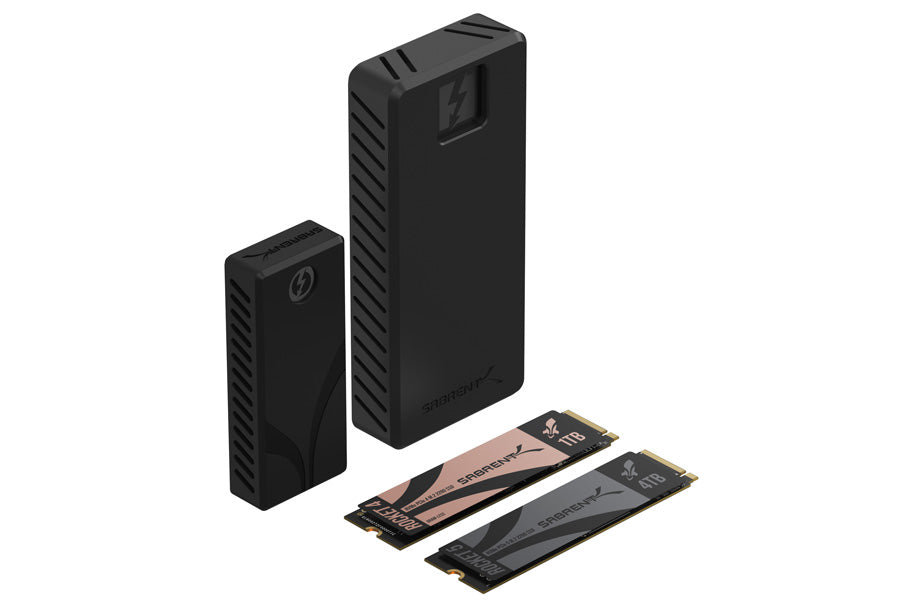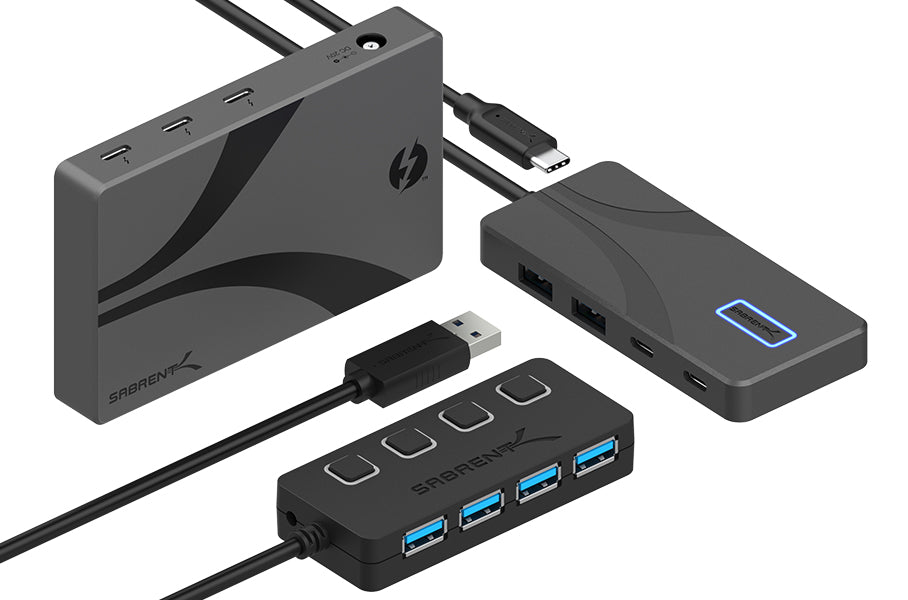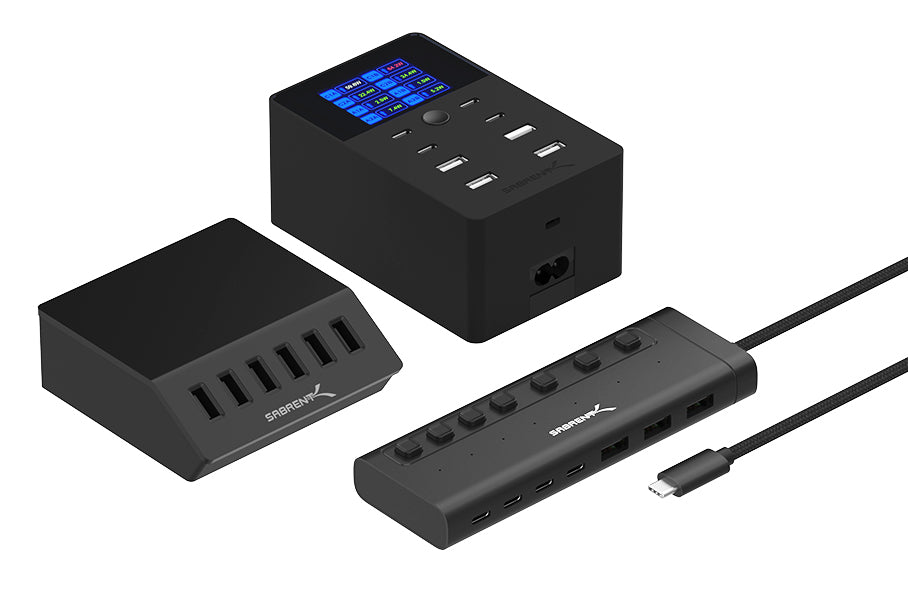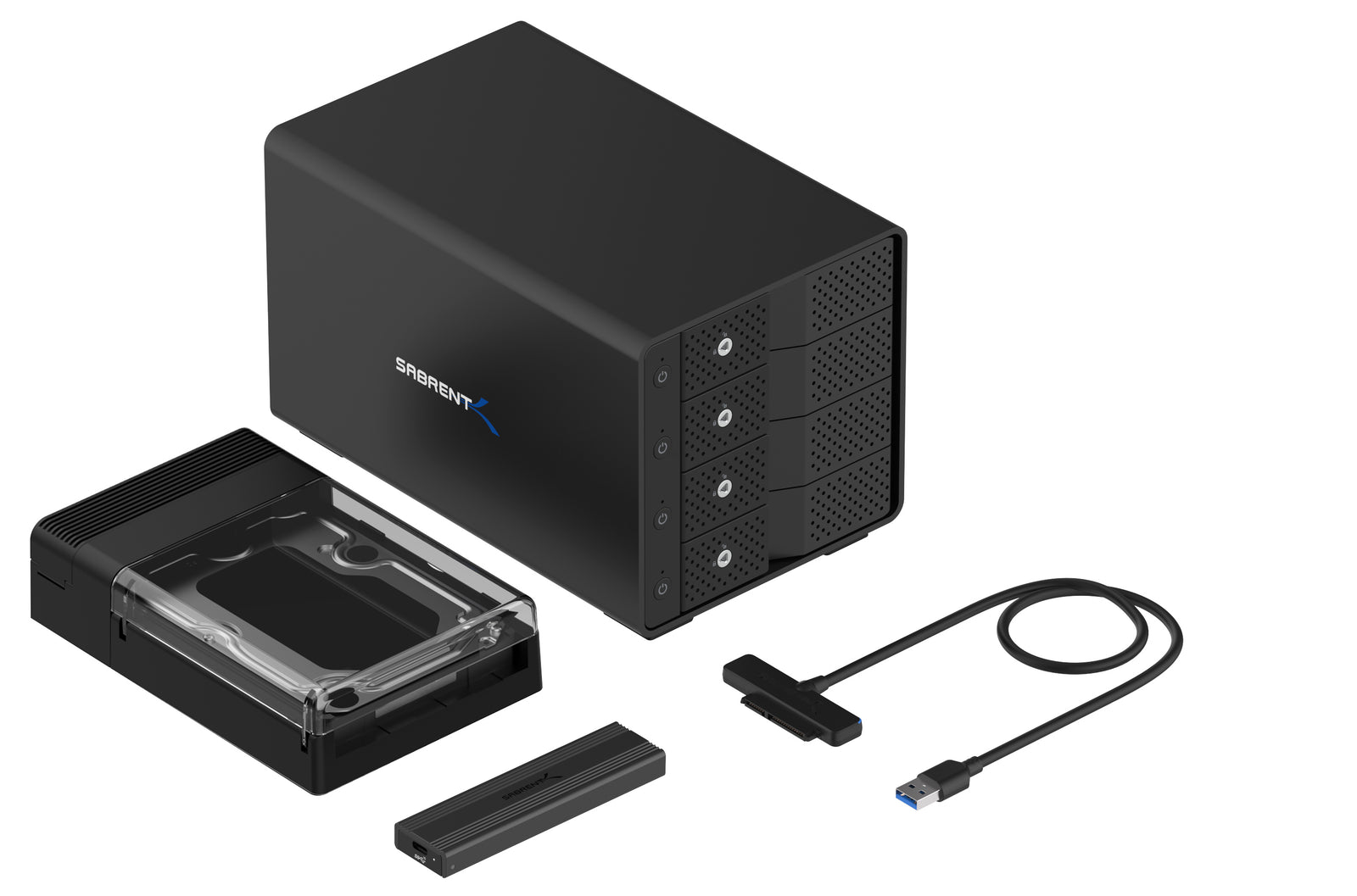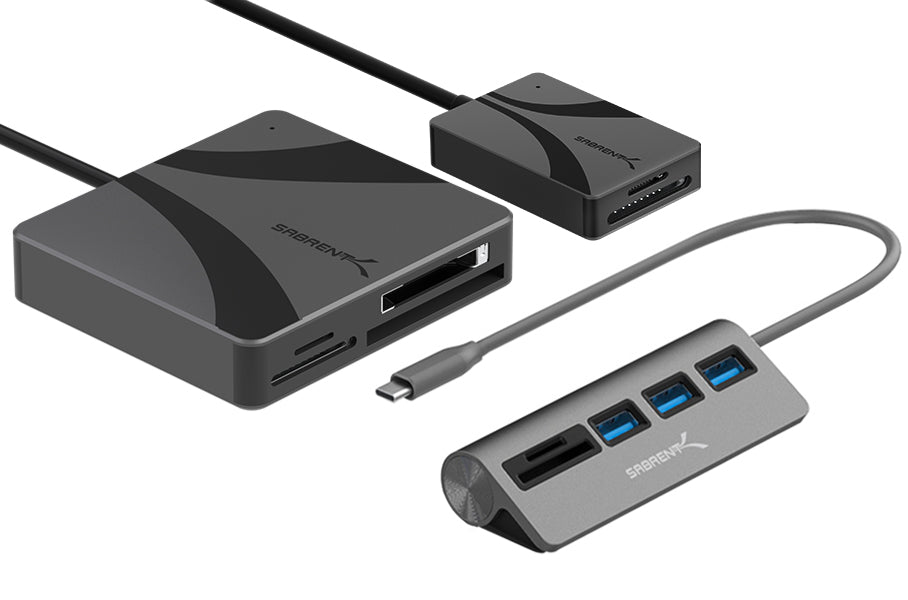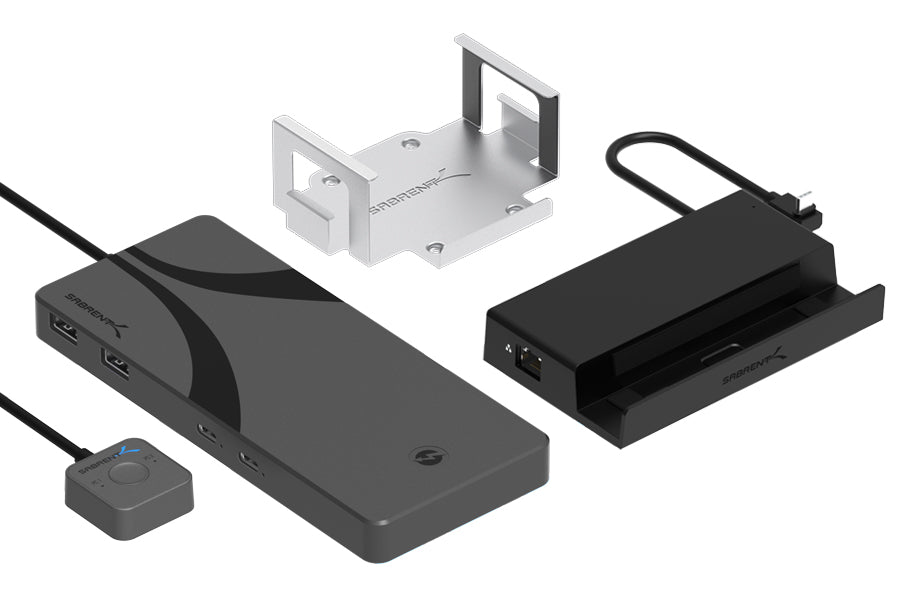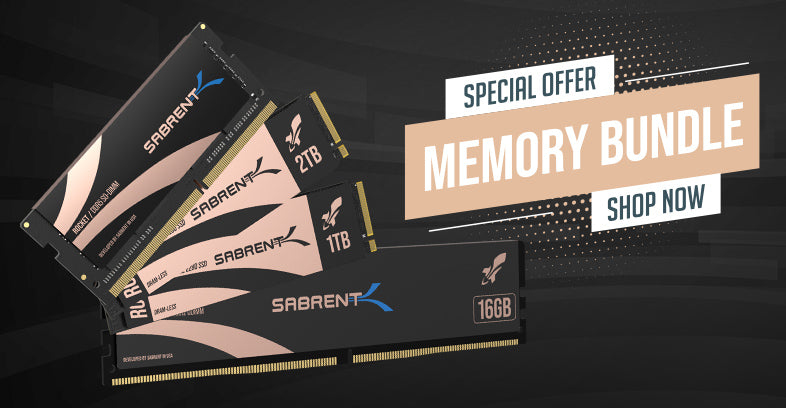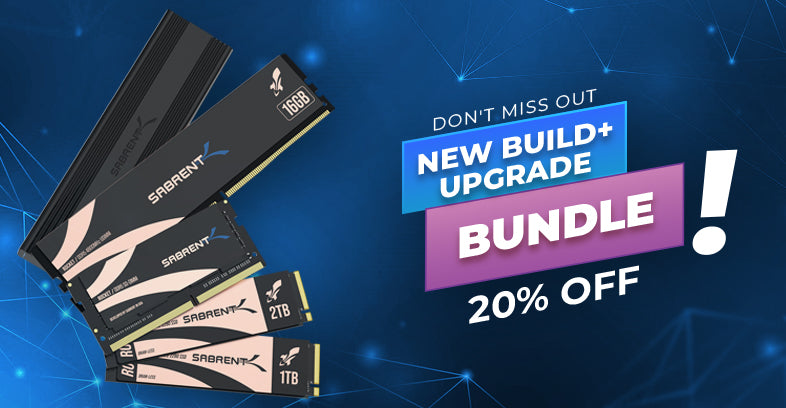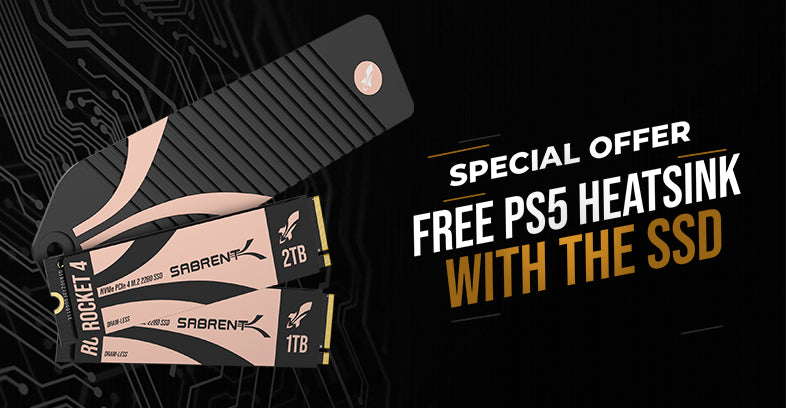If you’re eager to add more fast storage and networking to your system and want to do it with minimal fuss, the Sabrent 3-Drive PCIe 3.0x4 NVMe M.2 SSD Card with Ethernet Port (EC-PM2L) is your answer. Add up to three SSDs and a 10Gbps networking card in otherwise slot-limited systems without analyzing board diagrams. We’ve taken a page from our 4-drive x4 adapter card (EC-P3X4), we’ve swapped the 4th M.2 slot for a 10GbE adapter for reliable wired networking, too. This lets you add storage and networking all through an x4 (electrical, x4 or larger physical) port without needing UEFI or motherboard PCIe bifurcation support. To translate, this means minimal headaches and no need to reduce your GPU’s performance.
The add-in-card (AIC) accepts a wide range of M.2 NVMe SSDs, in the 2230/2242/2260/2280 form factors and from PCIe 2.0 to 5.0. These drives and the AIC hardware are cooled by the included aluminum heatsink, which comes with thermal padding. If using a quality CAT 5e or faster cable with compliant networking equipment, the Ethernet port can reach up to 10Gbps (10GbE) speeds but is backward compatible down to and including Ethernet (100Mbps) speeds. The card supports power-saving states and other features, too. This gives you the flexibility to quickly and easily add or swap one or more SSDs and directly connect the system with a fast networking connection for use as NAS, a SOHO server, homelab or AI development, and more.
Note: Each M.2 slot can receive/send up to x2 PCIe 3.0 bandwidth. Total upstream connection for drives and networking is x4 PCIe 3.0.

